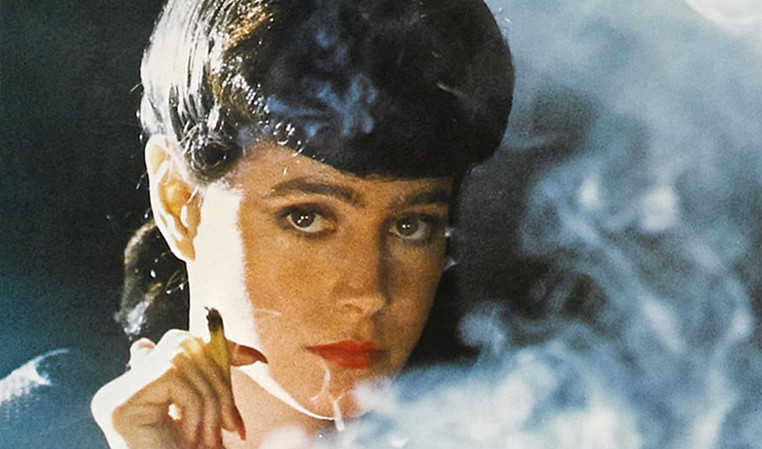
Films, in the sentimental human memory, may be portals to another time and space. In the dusting collection of porcelain chinoiserie, in the tangle of billowing lace curtains, or in the neglected wooden cupboard of a cellar pantry, there is an opportunity of temporal teleportation for the nostalgic visionary.
Through tactile sensibility, the ghosts of the past race into recall. The film, in its two-dimensional exile, is inhibited in its effort to superintend the viewer’s sensory faculty. However, in the same way it tries to suggest a more detailed tactile sensibility, the film can perpetuate many atmospheric illusions.
There are many ways a film can inform a sense of atmosphere. This can be through the detailing of cinematic sound space, aesthetic suggestions within the mise-en-scène, or simply in the way a film seems to breath between takes. It does this through tonal implications as well. For instance, an atmosphere can be brooding, cool, decadent, or whimsical. The following is a list of films that establish this sense of atmosphere.
10. Play Misty For Me
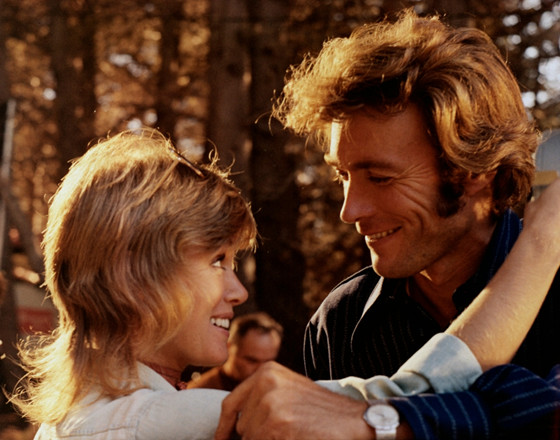
Clint Eastwood’s 1971 psychological thriller Play Misty For Me is ladened with atmosphere. Set in the small beach city of Carmel-by-the-Sea, California, Play Misty For Me has the benefit of beholding this beautiful coastal emissary in service to the film’s mystifying atmosphere. Dave Garver, played by Clint Eastwood himself, is a KRML radio disc jockey with a propensity for jazz and poetry.
During Dave Garver’s radio show, he gets a recurring call from some woman who always requests that he play the jazz standard “Misty.” One evening Dave meets a charming woman at the bar he frequents named Evelyn Draper. He soon discovers that Evelyn is the woman who keeps phoning in to his radio show, and that she had actually been waiting to see him at the bar that evening before they met.
That night the two engage in what Garver thought to be a one night stand, but soon learns that he is painfully mistaken. Evelyn becomes increasingly possessive of Garver, and starts impeding in on his professional and personal life –even descending into violence and murder.
The idyllic setting, smooth soundtrack, and the diegetic blurbs from the KRML radio broadcast all contribute to Play Misty For Me’s sense of atmosphere. In general, even the tonal qualities of the film’s dialogue suggest the mood Eastwood was hoping to convey.
The atmosphere is heavily influenced by the Carmel-by-the-Sea setting, but it is the juxtaposition between the charming city and Evelyn’s nightmarish behavior that establishes a sense of unrest in this balmy context.
9. Pastoral: To Die in the Country
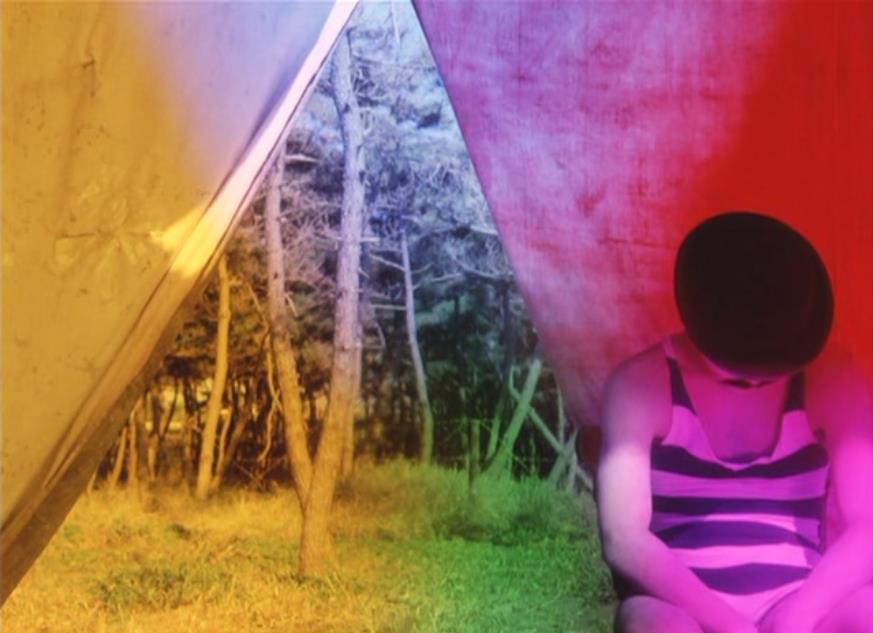
Shūji Terayama’s 1974 Drama fantasy film titled Pastoral: To Die in the Country, otherwise known as Pastoral: Hide and Seek is a lesser known film with a fantastic atmosphere. One of the shorter films on this list, running for only 115 minutes, the film leaves a deep impression in very little time. The story means to follow a young boy’s coming of age within a surreal imagining of a Japanese village.
Upon first watch, the film is immediately hypnotic. The soundscape is detailed in a very interesting and almost magical way. It sounds exoteric, yet monophonic. There seems to be an omnipresent ringing of something that feels reminiscent of Baoding balls, or perhaps bells in religious ceremonials. The soundscape differs from the more makeshift contents within the frame.
For one thing, many of the scenes are presented with unexplained color variance on account of the tinted filters used in the cinematography. Secondly, the costuming is very carnivalesque. In fact, there is a carnival subplot given some focus in the film which seems to dictate the film’s play of color. The film is artistic in ways that are quite pioneering for its time. The film is astonishingly underrated, and has an atmosphere like no other.
8. The Night of the Hunter
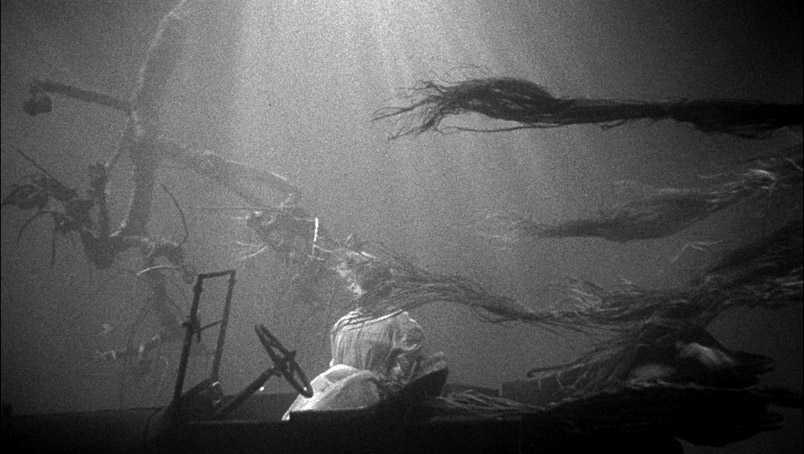
Charles Laughton’s 1955 crime thriller The Night of the Hunter starring Robert Mitchum and Lillian Gish has an atmosphere characteristic of the southern gothic genre. The film follows Reverend Harry Powell, played by Mitchum, who is a bible wielding serial killer with the words “Love” and “Hate” tattooed on his knuckles.
Having met a man in prison who confessed to hiding 10,000 dollars of stolen money, Powell tracks down a widow (played by Shelley Winters) –hoping to steal the money himself. Standing in his way are the meddling children, who are suspicious of Powell’s character.
The film has a terrific sense of atmosphere mostly due to the melding of the southern gothic genre with the cinematographic techniques used in German Expressionism. Littered with stark shadows and dutch angles, the film shows that the two meld together perfectly.
In fact, in 1992, the United States Library of Congress proclaimed Laughton’s The Night of the Hunter as “aesthetically significant.” Not only does the cinematographic execution play a role in promoting the film’s atmosphere, but also the fantastic musical score contributes heavily to the overall sense of mood.
Two scenes in particular stand out. First, when the children sail away on a river boat to escape the menacing Powell –an air lullaby sounds. As the boat slowly moves past cobwebs and Cane toads, there is a moment to contemplate the gravity of the predicament these children are in.
Later, an equally atmospheric moment in the film is when Lillian Gish and Robert Mitchum sing a rendition of the traditional church hymn “Leaning on the Everlasting Arms” during an all night standoff. Mitchum sits outside stalking the home in his delusional crusade, while Gish totes a rifle in a rocking chair from within. Not only is this a great thematic moment, comparing the moral righteousness of the characters, but it is also incontestably atmospheric.
7. Spirited Away
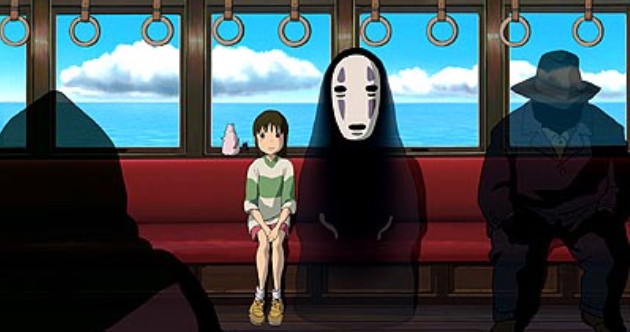
Many of Hayao Miyazaki’s films could have easily been justified in this list, however his 2001 Spirited Away feels distinctive –given the intuition involved in the viewing experience. With animated features, directors have a significant amount of control over the world building involved in pre-production.
However, along with this advantage, there is also the disadvantage of animation’s apparent two dimensional fictionality. Considering this inhibition, the fact that Spirited Away seems to manifest itself in a way that feels absurdly rational is certainly special. Furthermore, the film finds time to meditate its own majesty –while also telling an immerisive story.
When Chihiro and her parents find an amusement park en route to their new home, at first glance the place seems abandoned. But soon Chihiro learns that the park is far from desolate when her parents are turned into pigs by supernatural beings who use the park as a resort. To save her parents, Chihiro must work to serve strange spirits for the owner of the bathhouse –a witch named Yubaba. In regards to the film’s atmosphere, the setting is uniquely creative. The overlap between dimensions feels very seamless.
Furthermore, the film proceeds like a journey inside a dream. Chihiro endures many emotionally charged obstacles, but every episode is neatly dealt with haste –like in any dream. Once again, the score (composed by Joe Hisaishi) adds a lot to the film’s sense of atmosphere.
A sequence that truly informs Spirited Away’s atmosphere is when Chihiro boards a train which takes her across this uncharted spirit world. The train passes through many mysterious and beautiful stations as the sun falls and it recedes into nighttime. The sequence is supported by gentle piano along with locomotive white noise. When people speak of the way a film breathes, this quiet but fascinating scene is one that definitely comes to mind. Overall, Spirited Away, a rather telling title, carries an incredibly delightful and whimsical atmosphere.
6. Blue Velvet
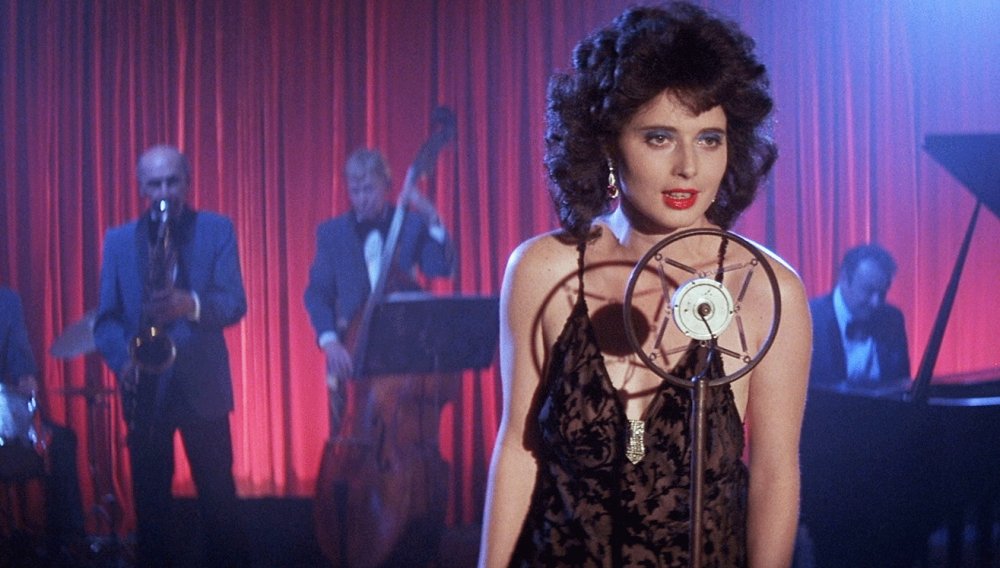
This list could not be complete without some mention of the highly atmospheric films directed by David Lynch. Rather characteristic of Lynch’s close ties with transcendental meditation, the Lynchian style seems to privilege a film’s atmosphere and feeling as its main imperative.
This is evident through the illusive storytelling in his films, which always successfully encourage an emotional response to strange or nonsensical situations. Oftentimes, Lynch establishes a sense of panic through artful audio and visual editing. This is especially effective when he pairs this sense of panic with the familiar monotony of everyday life.
One film which has a dynamic atmosphere full of juxtaposition is Lynch’s 1986 Crime thriller Blue Velvet. Starring Kyle MacLachlan, Isabella Rossellini, Laura Dern, and Dennis Hopper, the film shadows Jeffrey Beaumont (MacLachlan) after he finds a severed ear in an abandoned field. The boy’s discovery thrusts Jeffrey into the mysterious dark underbelly of his suburban town.
Along the way, Jeffrey becomes infatuated with a lounge singer, which inadvertently gets him involved with the unidentified gas inhaling psychopath Frank Booth (Hopper). The premise is not super revelatory of the film’s absolute singularity.
One scene in which Blue Velvet really distinguishes itself is when Ben, Frank’s partner, lip-syncs a rendition of Roy Orbison’s “In Dreams.” The scene is uniquely menacing, and the film continues down this path of maudlin machiavellianism. There is a certain element of dandyism in this feature, but it is offset by the imbuement of something more ethereal. The combination of dandyism and etherealism establishes Blue Velvet’s atmosphere as something unearthly but also very vaudevillian.